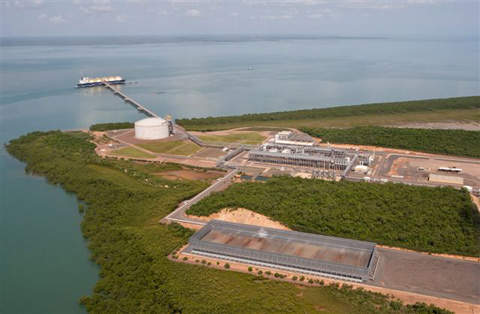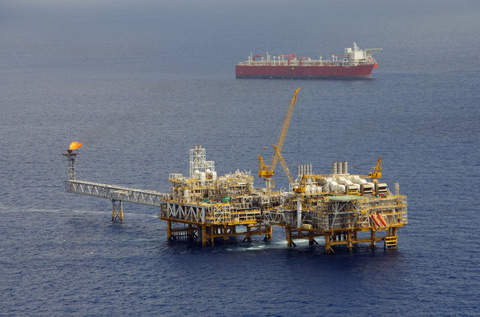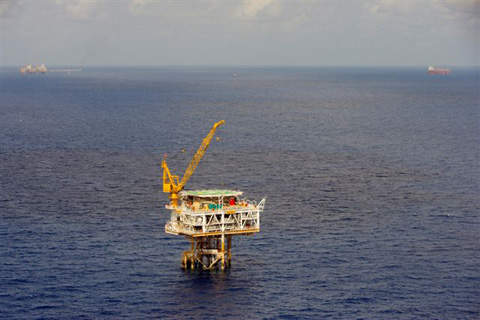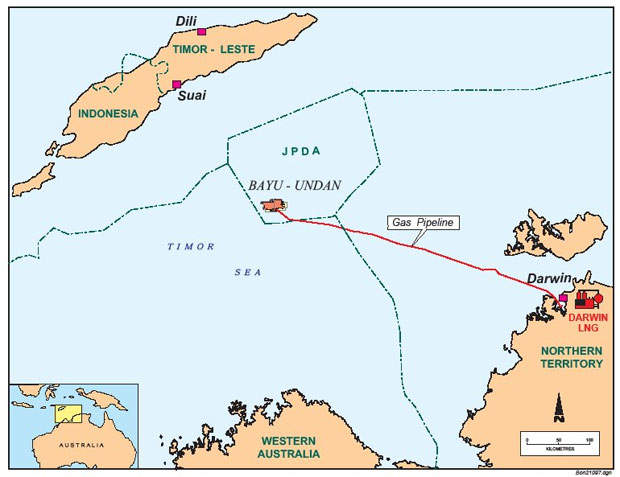Bayu-Undan is located 500km offshore Darwin, Australia, in the Timor Sea, and is 250km south of East Timor. It is equipoised at the boundaries of block 91-12 (60%) and 91-13 (40%), under Area A of the Australia/Indonesia Zone of Cooperation. The fields are located on the same 160km² structure, in 80m of water.
The operator is ConocoPhilips, which has a 57.2% stake. Partners are Eni (11%), Santos (11.5%), Inpex (11.3%) and Tokyo Electric Power and Tokyo Gas (9.2%). The project received an award for technology from the Asian Civil Engineering Coordinating Council in Taiwan in 2007.
Bayu-Undan discoveries
Bayu was discovered in early 1995, when the Bayu-1 well intersected a 155m gas condensate column, at a depth of 897m.
This tested 2.54m³ of gas a day and 5,250bbl of condensate. The follow-up well, Bayu-2, tested 991,000m³ gas a day and 2,000bbl of condensate from a 52m interval.
In July 1995, Undan was discovered 10km north-west of Bayu, where a 139m gross hydrocarbon column tested 1.6 million cubic feet of gas a day and 3,900bbl condensate a day. The total recoverable field of reserves ranges between 350 and 400 million barrels of hydrocarbon liquids and 3.4tcf of gas.
Bayu-Undhan field development details
The 25x15km field will need approximately 26 wells over its lifetime to produce the reserves.
The field life is estimated to be 25 years. Commercial production began in April 2004, delivering 115,000bpd of condensates and LPG.
The project was developed in two phases. The $1.8bn gas-liquids first phase involved the production and processing of wet gas, the separation and storage of condensate, propane and butane, and the re-injection of dry natural gas back into the reservoir.
The phase also involved the construction of a remote wellhead platform, a drilling, production and processing platform and a compression, utilities and quarters platform. The recovered liquids are sent to floating storage and offloading (FSO) facility.
Total Integrated Group Approach, an alliance between Fluor Daniel and Worley, was selected as the engineering and procurement contractor.
Phase II
The second phase of Bayu-Undan’s development, the gas phase, began production in February 2006, and cost $1.5bn. This involved the extraction of lean gas from the reservoir and transportation to Darwin, on Australia’s northern coast, via a 500km, 26in pipeline, where it is liquefied at a single-train processing plant at Wickham Point, then shipped as LNG to customers Tokyo Electric Power Company and Tokyo Gas in Japan.
It has a production capacity of 3.24 million tonnes a year, and ConocoPhillips has entered agreements with the two companies to supply three million tonnes of Bayu-Undan LNG a year over 17 years.
The plant was built under a lump-sum turnkey contract with units of the Bechtel Corporation, which subcontracted the construction of the LNG storage tank to a consortium of Theiss of Australia and TKK of Japan.
The field is producing from ten production wells. Four gas injection wells and two water injection wells were drilled.
Phase III
The third phase of Bayu-Undan’s development will be completed in three stages with work on the first stage beginning in 2014. The first gas was produced under Phase III in April 2015.
The third phase comprises drilling and tying-back at the Bayu-Undan field with two subsea production wells providing production assurance. The drilling of additional production wells is evaluated in the next stages.
Facility features
The Bayu-Undan development complex includes a wellhead platform, a compression, utilities and quarters (CUQ) platform and a drilling, production and processing (DPP) platform. The wellhead platform is an unmanned structure that was installed in April 2006 and consists of 17.7×24.4m topsides, supported by a four-leg 1,319t jacket.
The CUQ and DPP platforms both consist of an eight-leg steel jacket, slotted to accommodate topside deck float over. The jacket dimensions are 48m x 50m, with a height of 90m.
The topsides were built at the Hyundai fabrication yard in Ulsan, South Korea. The CUQ topsides weigh 11,500t and are 72m-long, 80m-wide and 31m-high, while the DPP topsides weigh 13,900t and are 65m-long, 64m-wide and 41m-high.
The processing equipment for the Bayu-Undan fields includes three 23MW gas-turbine-driven injection compressors, two 7.5MW gas-turbine flash gas compressors and two turboexpanders. It has high-pressure (100/310bar) column vessels and four gas-turbine-driven generators.
The topsides were installed in November 2003 by Dockwise, under a contract awarded by Perth-based Clough-Aker Joint Venture covering their transportation and installation.
Floating storage and offloading facility
The integrated condensate and LPG storage offloading facility, the first of its kind at the time, can store 820,000bbl (130,000m3) of condensate, 300,000bbl (95,000m3) of propane and 300,000bbl (47,500m3) of butane. It has no propulsion system of its own, and is 248m-long, 54m-wide, with a tonnage of 150,000dwt. Accommodation is available for 60 people.
The purpose-built FSO, named the Liberdade, was built by Samsung Heavy Industries, launched in Korea in September 2002 and permanently positioned offshore in the field about a year later. It processes the condensate and LPG and stores them before they are loaded onto tankers for export. As such, it is designed to exploit remote oil and gas reserves that might otherwise be stranded for decades.
Pipelines
Flowlines between the WHP and DPP consist of an 8km, 18in carbon steel CRA-lined production line and an 8km, 16in injection line.
Flowlines between the DPP and FSO consist of a 12in condensate line, a 6in carbon steel propane line, a 6in butane line and a 4in carbon-steel fuel gas line, all 2.3km-long.
Contractors involved
The combined service contract for the project development was given to Neptune Marine Services in December 2009. The contract work comprises pipeline inspection surveys, grouting services and ROV inspection of the project’s pipelines and platforms.
Trelleborg provided high-performance technology pipe penetration seals for the field under a $2m contract.
Territory Diving Services provided diving services for the project in February 2005.
ConocoPhilips contracted URS to carry out geotechnical studies at the field and assisted in the preparation of the Environmental Impact Statement.
In October 2011, Clough AMEC joint venture was awarded an extension contract to provide maintenance services at the field.
FMC Technologies was contracted for the supply of subsea equipment for Bayu Undan third Phase project, in May 2013.
JDR Cable installed subsea production umbilicals in the third phase of the Bayu-Undan Field development in the Joint Petroleum Development Area (JPDA) in Australia in January 2014.
Bombora-ESP was contracted to provide construction management services for the Bayu-Undan Phase III in July 2014.
SpeedCast was contracted to deliver high-speed satellite communications services between ConocoPhillip’s offshore production facilities in the Bayu-Undan field and regional headquarters in Perth, Australia.
In December 2015, Wood Group received a multi-year contract to provide brownfield engineering services for the project.
Clough AMEC received a three-year contract from Conoco Phillips to provide asset support, operations and maintenance services to the Bayu-Undan offshore field development.







